Satisfied? All F1 Teams Have Been Cleared of Cost Cap Malfeasance

Despite evidence that numerous Formula One teams had broken the sport’s updated financial rules during the 2022 season, the Federation Internationale de l'Automobile (FIA) has formally announced that all ten have since operated under the cost cap limitations.
"The review has been an intensive and thorough process, beginning with a detailed analysis of the documentation submitted by the competitors," stated the FIA. "Additionally, there has been an extensive check of any non-F1 activities undertaken by the teams, which comprised multiple on-site visits to team facilities and careful auditing procedures to assess compliance with the Financial Regulations."
Criticism has not abated, however.
Like it or not, cheating is a fundamental component of motorsport. Race organizers frequently change the rules and teams habitually seek loopholes that will give them an edge. This often creates a gray area where it’s not entirely clear what qualifies as rule-breaking vs. rule exploitation.
A favored example of this is NASCAR banning the Dodge Daytona and Plymouth Superbird. Seeking an aerodynamic advantage on high-speed tracks, Chrysler realized there were no formal rules against fitting nose cones and massive rear spoilers to their racers, provided they did the same with the homologation cars sold to the public (this was back when NASCAR still required vehicles to be based on real production automobiles) to ensure compliance.
With the resulting Daytona and Superbird (below) dominating NASCAR events from 1969-1970, there was a lot of supposition about how Chrysler had broken the rules. But when it came out that there were no official restrictions on the matter, organizers simply banned the use of aero kits and restricted engine displacement to just 305 cubic inches. With Chrysler being forced into abandoning its aerodynamic advantage and banned from utilizing motors sized above 400 cubic inches, its dominance in NASCAR ended overnight.
Over the years, racing teams from all corners of motorsport have been trying to find ways of gaming the system. While this often results in exploiting bylaw blind spots, full-blown cheating is nearly as common. But it’s ultimately up to racing organizers and the sanctioning bodies to interpret when and how the rules are broken and this can lead to decisions that seem arbitrary or widespread criticism of engaging in favoritism.
Formula One has taken great strides to expand its popularity in recent years. Rules have been tweaked in a bid to encourage closer competition and there’s been a massive marketing effort that includes a Netflix documentary that’s covered every racing season since 2018 and broadcasting rights for American television networks. F1 has even abandoned the use of grid girls and started trying to present itself as environmentally conscious to minimize any bad publicity stemming from activist groups. As a byproduct, the changes became big news and drew even more media attention.
The above seems to have helped viewership immensely, with the sport seeing a surge of popularity in the United States that has only recently started showing signs of a plateau. However, some of Formula One’s historic criticisms still appear to be in play. Last year’s Abu Dhabi Grand Prix ended with the FIA deciding the results based on a shootout between Lewis Hamilton and Max Verstappen. However, many accused organizers of corruption due to how the matter was handled.
That season likewise resulted in the FIA looking into numerous teams accused of having exceeded the relatively new $142.2 million budget cap. Williams and Aston Martin were cited for minor penalties with Red Bull (long famous for spending big) getting busted for exceeding the limit by roughly $2 million and failing to file a tax deduction document that could have improved the situation.
The scandal wasn’t so much that some teams had broken the financial rules and gotten away with it. Despite some initial denial, Red Bull admitted to having screwed up and was forced into paying a $7 million fine while also losing some of its development time. But its driver (Max Verstappen) ultimately won the season, with Red Bull likewise taking home the constructor trophy for 2022 by a wide margin.
Now, the FIA is saying that all teams have been investigated and cleared of having exceeded the cost cap going into this year’s events. But fans (and even a few teams) are calling into question the regulatory body’s ability to effectively police spending. For starters, teams are already allowed to exclude their three highest-paid members from the total. This allows the biggest brands to hire the best drivers by offering tens of millions more per season. There are also lingering questions about how exactly the FIA can possibly oversee all aspects of team spending, what should be included in the $142.2 million seasonal budget cap, and what constitutes fair penalties for exceeding it.
For as much effort as Formula One has put into trying to level the playing field, we’re still seeing teams famous for having deep pockets (e.g. Red Bull, Ferrari, and Mercedes) outperforming the rest of the grid. These are old problems and something the FIA seemed eager to move away from. But one wonders if they’ve been effectively dealt with via the new spending caps, with there still being some concerns regarding how things were handled last year.
"The FIA also notes that the Financial Regulations are essential to the long-term financial stability of the sport and that they will continue to be developed and refined based on the findings of each review process both in terms of the regulations themselves, which are written and approved under the FIA Formula 1 governance process, and the way in which they are enforced and policed," the organization stated.
[Images: Formula1; NASCAR]
Become a TTAC insider. Get the latest news, features, TTAC takes, and everything else that gets to the truth about cars first by subscribing to our newsletter.

A staunch consumer advocate tracking industry trends and regulation. Before joining TTAC, Matt spent a decade working for marketing and research firms based in NYC. Clients included several of the world’s largest automakers, global tire brands, and aftermarket part suppliers. Dissatisfied with the corporate world and resentful of having to wear suits everyday, he pivoted to writing about cars. Since then, that man has become an ardent supporter of the right-to-repair movement, been interviewed on the auto industry by national radio broadcasts, driven more rental cars than anyone ever should, participated in amateur rallying events, and received the requisite minimum training as sanctioned by the SCCA. Handy with a wrench, Matt grew up surrounded by Detroit auto workers and managed to get a pizza delivery job before he was legally eligible. He later found himself driving box trucks through Manhattan, guaranteeing future sympathy for actual truckers. He continues to conduct research pertaining to the automotive sector as an independent contractor and has since moved back to his native Michigan, closer to where the cars are born. A contrarian, Matt claims to prefer understeer — stating that front and all-wheel drive vehicles cater best to his driving style.
More by Matt Posky
Latest Car Reviews
Read moreLatest Product Reviews
Read moreRecent Comments
- Jalop1991 In a manner similar to PHEV being the correct answer, I declare RPVs to be the correct answer here.We're doing it with certain aircraft; why not with cars on the ground, using hardware and tools like Telsa's "FSD" or GM's "SuperCruise" as the base?Take the local Uber driver out of the car, and put him in a professional centralized environment from where he drives me around. The system and the individual car can have awareness as well as gates, but he's responsible for the driving.Put the tech into my car, and let me buy it as needed. I need someone else to drive me home; hit the button and voila, I've hired a driver for the moment. I don't want to drive 11 hours to my vacation spot; hire the remote pilot for that. When I get there, I have my car and he's still at his normal location, piloting cars for other people.The system would allow for driver rest period, like what's required for truckers, so I might end up with multiple people driving me to the coast. I don't care. And they don't have to be physically with me, therefore they can be way cheaper.Charge taxi-type per-mile rates. For long drives, offer per-trip rates. Offer subscriptions, including miles/hours. Whatever.(And for grins, dress the remote pilots all as Johnnie.)Start this out with big rigs. Take the trucker away from the long haul driving, and let him be there for emergencies and the short haul parts of the trip.And in a manner similar to PHEVs being discredited, I fully expect to be razzed for this brilliant idea (not unlike how Alan Kay wasn't recognized until many many years later for his Dynabook vision).
- B-BodyBuick84 Not afraid of AV's as I highly doubt they will ever be %100 viable for our roads. Stop-and-go downtown city or rush hour highway traffic? I can see that, but otherwise there's simply too many variables. Bad weather conditions, faded road lines or markings, reflective surfaces with glare, etc. There's also the issue of cultural norms. About a decade ago there was actually an online test called 'The Morality Machine' one could do online where you were in control of an AV and choose what action to take when a crash was inevitable. I think something like 2.5 million people across the world participated? For example, do you hit and most likely kill the elderly couple strolling across the crosswalk or crash the vehicle into a cement barrier and almost certainly cause the death of the vehicle occupants? What if it's a parent and child? In N. America 98% of people choose to hit the elderly couple and save themselves while in Asia, the exact opposite happened where 98% choose to hit the parent and child. Why? Cultural differences. Asia puts a lot of emphasis on respecting their elderly while N. America has a culture of 'save/ protect the children'. Are these AV's going to respect that culture? Is a VW Jetta or Buick Envision AV going to have different programming depending on whether it's sold in Canada or Taiwan? how's that going to effect legislation and legal battles when a crash inevitibly does happen? These are the true barriers to mass AV adoption, and in the 10 years since that test came out, there has been zero answers or progress on this matter. So no, I'm not afraid of AV's simply because with the exception of a few specific situations, most avenues are going to prove to be a dead-end for automakers.
- Mike Bradley Autonomous cars were developed in Silicon Valley. For new products there, the standard business plan is to put a barely-functioning product on the market right away and wait for the early-adopter customers to find the flaws. That's exactly what's happened. Detroit's plan is pretty much the opposite, but Detroit isn't developing this product. That's why dealers, for instance, haven't been trained in the cars.
- Dartman https://apnews.com/article/artificial-intelligence-fighter-jets-air-force-6a1100c96a73ca9b7f41cbd6a2753fdaAutonomous/Ai is here now. The question is implementation and acceptance.
- FreedMike If Dodge were smart - and I don't think they are - they'd spend their money refreshing and reworking the Durango (which I think is entering model year 3,221), versus going down the same "stuff 'em full of motor and give 'em cool new paint options" path. That's the approach they used with the Charger and Challenger, and both those models are dead. The Durango is still a strong product in a strong market; why not keep it fresher?




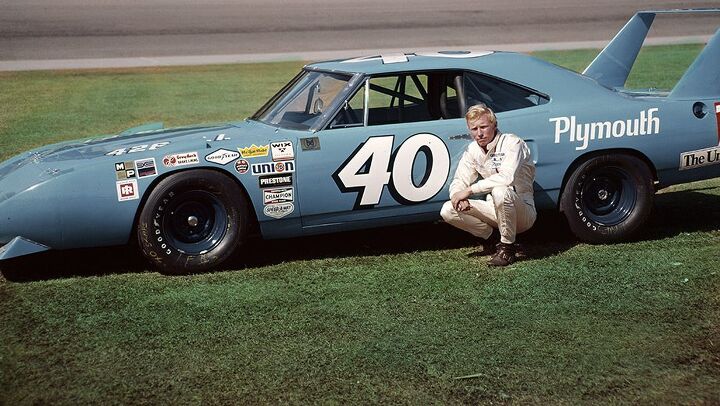












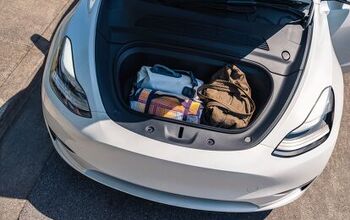


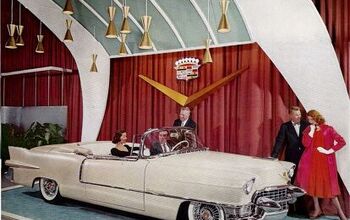
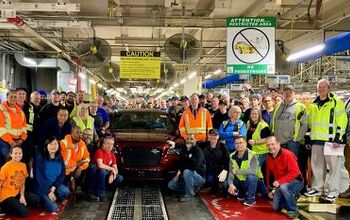









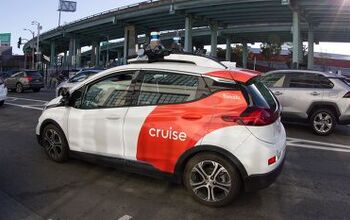
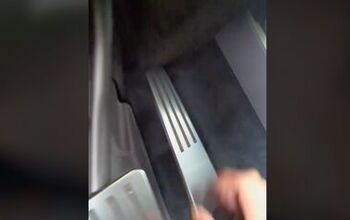

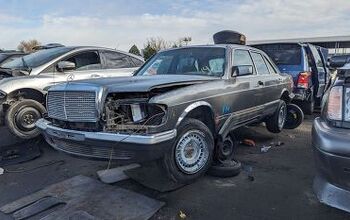
Comments
Join the conversation
I blame Hunter Biden - the most dangerous man who was ever born on earth...ever....on earth...Biden.......Hunter...America....freedom...communists...Biden....can't stop.....believin in tomorrow
F1 is out for me. IMSA all the way